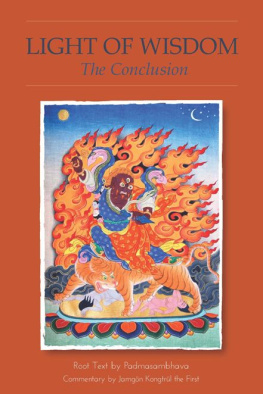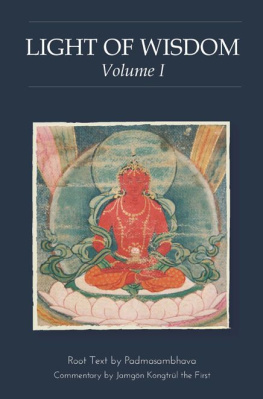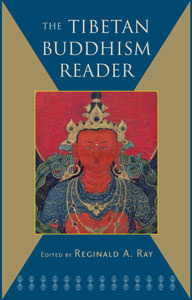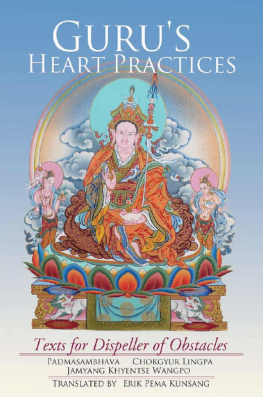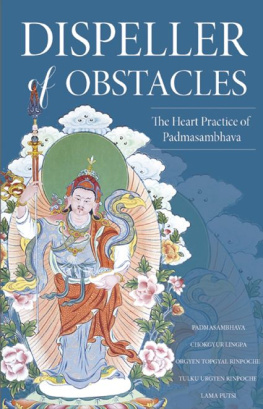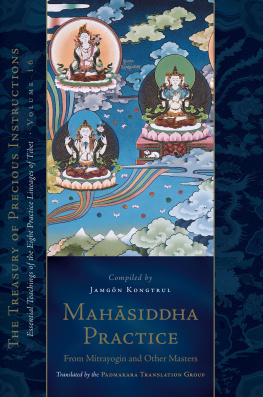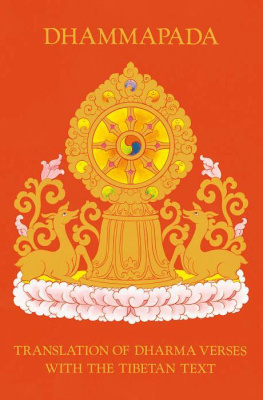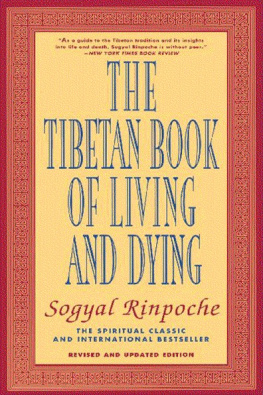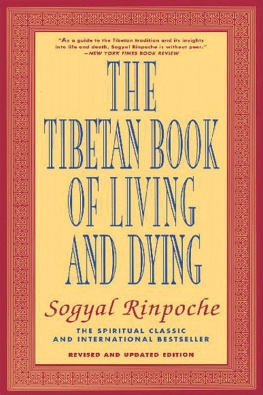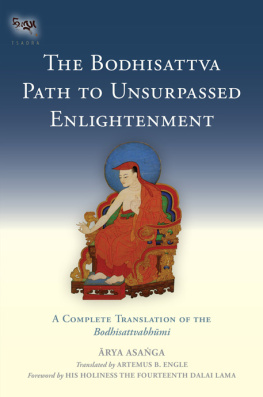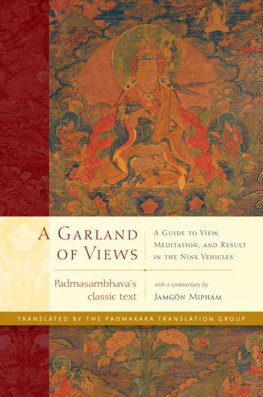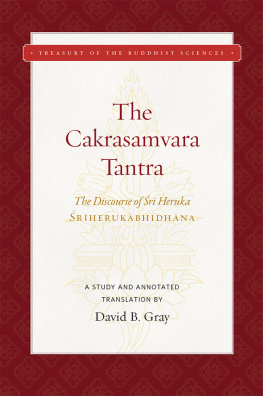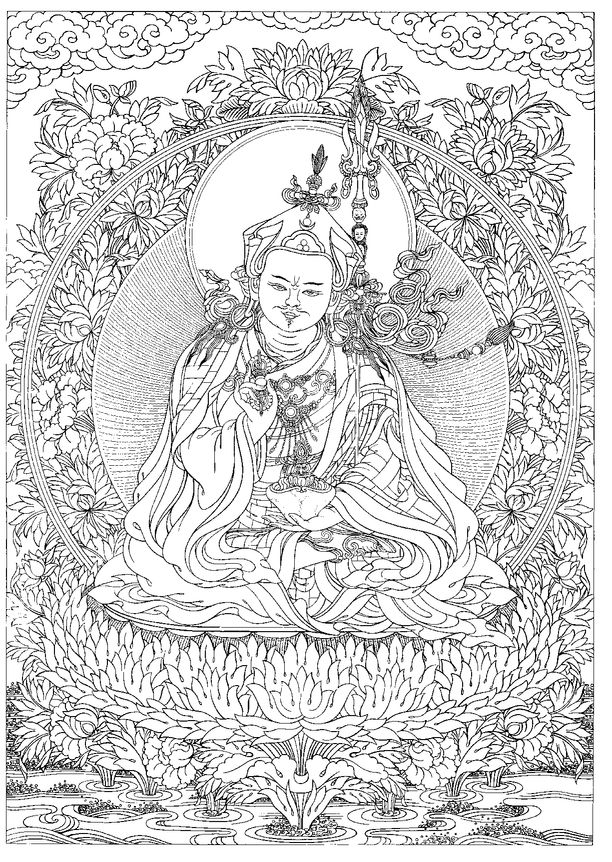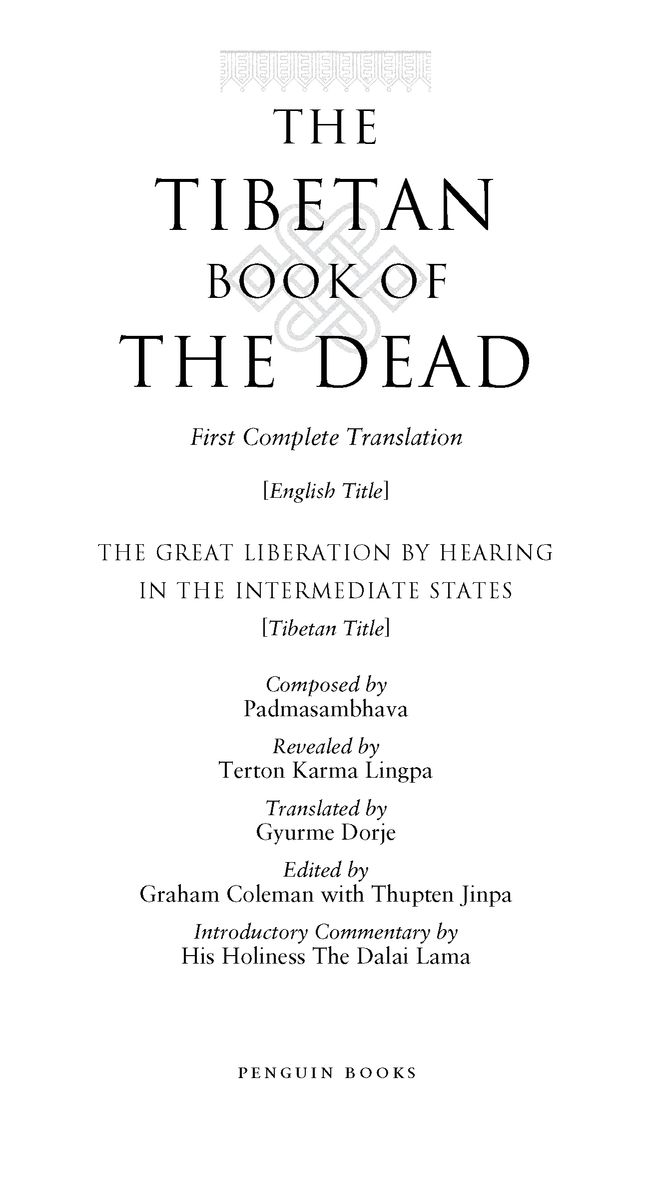Table of Contents
PENGUIN CLASSICS DELUXE EDITION
THE TIBETAN BOOK OF THE DEAD
The translation of The Tibetan Book of the Dead was carried out with the support of His Holiness the Dalai Lama and with the commentarial guidance of revered contemporary Tibetan masters including the late Head of the Nyingma School of Tibetan Buddhism HH Dilgo Khyentse Rinpoche, Zenkar Rinpoche and Garje Khamtrul Rinpoche.
GYURME DORJE (PhD) is a leading scholar of the Nyingma tradition of Tibetan Buddhism. His seven major publications include works on Tibetan lexicography, medicine, divination and pilgrimage guides to Tibet and Bhutan, as well as the translations of HH Dudjom Rinpoches The Nyingma School of Tibetan Buddhism. His forthcoming titles include The Guhyagarbha Tantra: Dispelling the Darkness of the Ten Directions.
GRAHAM COLEMAN is President of the Orient Foundation (UK), a major Tibetan cultural conservancy organization. Writer/director of the acclaimed feature documentary Tibet: A Buddhist Trilogy and editor of the Handbook of Tibetan Culture, he has been editing Tibetan Buddhist poetry and prose texts in cooperation with various distinguished translators since the mid -1970s.
THUPTEN JINPA (PhD) is the senior translator to His Holiness the Dalai Lama and President of the Institute of Tibetan Classics. His works include the translation of twelve books by the Dalai Lama, including the New York Times bestseller Ethics for the New Millennium and the forthcoming The Universe in a Single Atom, the Dalai Lamas perspective on the meeting of Buddhism and modern science.
Padmasambhava (Guru Rinpoche)
May all sentient beings,
children of buddha nature,
realise
the ultimate nature of mind:
insight and compassion,
in blissful union.
Acknowledgements
Our project began in 1988 when HH the Dalai Lama kindly offered to request HH Dilgo Khyentse Rinpoche, the late head of the Nyingma school, to give an oral commentary to me on key sections of the Tibetan Book of the Dead. The Dalai Lama knew that various translations had been made of The Great Liberation by Hearing, our Chapter 11, but that so far no one had translated the entire Tibetan Book of the Dead. HH Dilgo Khyentse graciously agreed to the Dalai Lamas request and over a period of four weeks gave the empowerments and an incisive and illuminating oral commentary to the core elements of the text, which was eloquently translated each day by Sogyal Rinpoche.
While in Kathmandu, receiving the oral commentary from HH Dilgo Khyentse Rinpoche, I had the good fortune to meet Dr Gyurme Dorje, who had previously translated Longchen Rabjampas commentary to the Guhygarbha Tantra, the root text on which the Tibetan Book of the Dead is based. During our first meeting, Gyurme agreed to make a new annotated translation of the entire Tibetan Book of the Dead, a task he undertook with exceptional care and dedication over the years that followed. While Gyurme was working on the translation he was also employed at the School of Oriental and African Studies in London as a research fellow, translating into English the Greater Tibetan-Chinese Dictionary (Bod-rgya tshig-mdzod chen-mo). During this time, Gyurme worked closely with the highly regarded Nyingma master Zenkar Rinpoche, who is one of the foremost contemporary lineage holders of the Tibetan Book of the Dead. Zenkar Rinpoche kindly advised Gyurme throughout the translation of our text and also gave an extensive oral commentary to us on Chapter 4, The Introduction to Awareness.
At various stages of the project, the Dalai Lama answered my questions about difficult points, and he also dictated to me the lucid and succinct Introductory Commentary. At the Dalai Lamas request, Khamtrul Rinpoche, an adviser to the Dalai Lama on Nyingma studies, also gave a beautiful oral commentary to key sections of Chapter 8 and dictated the introduction to Chapter 11.
Throughout the editing process I had the happy good fortune of working with Geshe Thupten Jinpa, senior translator to the Dalai Lama, whom I had first met in 1977 and who has been a close friend since he came to England to study philosophy at Cambridge in 1989. Jinpa translated the Dalai Lamas Introductory Commentary and reviewed every line and word of all fourteen chapters of the edited translation with me twice, in the course of which he made countless important and inspiring suggestions. Everyone who knows Jinpas work is aware of his special talent and skill both as a translator and writer and these have played an invaluable role in this project. Finally, the individual introductions to each of the chapters, except Chapter 11, were written by Dasho Sangay Dorji, a Bhutanese scholar, who comes from a family whose paternal line has been lineage holders of the Tibetan Book of the Dead for several generations and who throughout his childhood accompanied his father every time he was called to a household to carry out these practices.
Needless to say it has been a wonderful privilege for us to work with all those who helped to make this project possible. Our insights and skills as writers would not even register on the most sensitive of detectors compared to those of the composers of the original cycle of teachings or the lineage holders who gave the commentarial explanation that guided us. Throughout this endeavour therefore we have tried to substitute hard work and attention to detail for our lack of ability and to let the original magnificence of the text shine through the clouds of our shortcomings as much as we were able.
My work on this project would not have been possible without the life-long friendship of the Orient Foundations chairman David Lascelles. It is difficult to thank him enough for all that he has made possible, beginning with our work together on the making of our films Tibet: A Buddhist Trilogy, in the 1970s, and ever since. Two other special friends, Elinore Detiger and Elsie Walker made it possible for this project to be initiated, and their kindness and confidence, together with that of Michael Baldwin, will never be forgotten. My sincere appreciation goes also to Johnnie and Buff Chace, Lucinda Ziesing, Faith Bieler, Lavinia Currier, Cynthia Jurs, Catherine Cochran, Margot Wilkie, Basil Panzer, Bokara Patterson and Lindsay Masters for their important contributions in the early stages of this work.
At Gyurme Dorjes request, Gene Smith of the Tibetan Buddhist Resource Center in New York generously made available a digital version of the three-volume manuscript from the library of the late Kyabje Dudjom Rinpoche, on which our translation is largely based. HH Dilgo Khyentse Rinpoche had previously provided copies of the text reprinted under his supervision in Delhi. Other versions of the text which we consulted, including the Varanasi reprint and other versions of Bhutanese and Chinese origin, are all from Gyurme Dorjes private collection. Some source materials were also kindly provided by Zenkar Rinpoche, Tulku Jigme Khyentse, Dr Burkhard Quessel of the British Library, and Dr Fernand Meyer of CNRS in Paris. Gyurme Dorje also especially acknowledges the kindness and profound advice of all of his teachers within the Nyingma tradition, including the previous Kangyur, Dudjom and Dilgo Khyentse Rinpoches, as well as Tulku Pema Wangyal and Zenkar Rinpoche, and he thanks his wife Xiaohong for all her encouragement and sustenance during the final years of this project.


